Discover the allure of the Pothos plant—also known as Devil’s Ivy or Golden Pothos—a low-maintenance houseplant prized for its vibrant, trailing vines and feng shui significance.
Perfect for both beginners and seasoned plant lovers, this guide covers everything from Pothos care and varieties to how it boosts your home’s energy. Read on to uncover the secrets of growing this remarkable plant!
Unveiling the Pothos plant: A Timeless Houseplant
The Pothos plant, scientifically named Epipremnum aureum, is a beloved tropical vine cherished for its heart-shaped leaves and easygoing nature. Its adaptability makes it a favorite for homes, offices, and even low-light spaces like dorms or bathrooms.
- Common Names: Pothos, golden Pothos, Devil’s Ivy, hunter’s rove, Pothos ivy.
- Botanical Name: Epipremnum aureum.
- Family: Araceae.
- Native Origin: Southeast Asia, Indonesia, and the Solomon Islands.
- Appearance: Features glossy, heart-shaped leaves, often variegated with yellow, white, or pale green streaks. Vines can grow 20–40 feet long indoors, adding 12–18 inches monthly under ideal conditions.
- Growth Habit: A fast-growing, trailing or climbing vine, perfect for hanging baskets or trained on supports like moss poles.
- Toxicity: Toxic to pets (cats and dogs) if ingested, causing digestive issues or irritation.
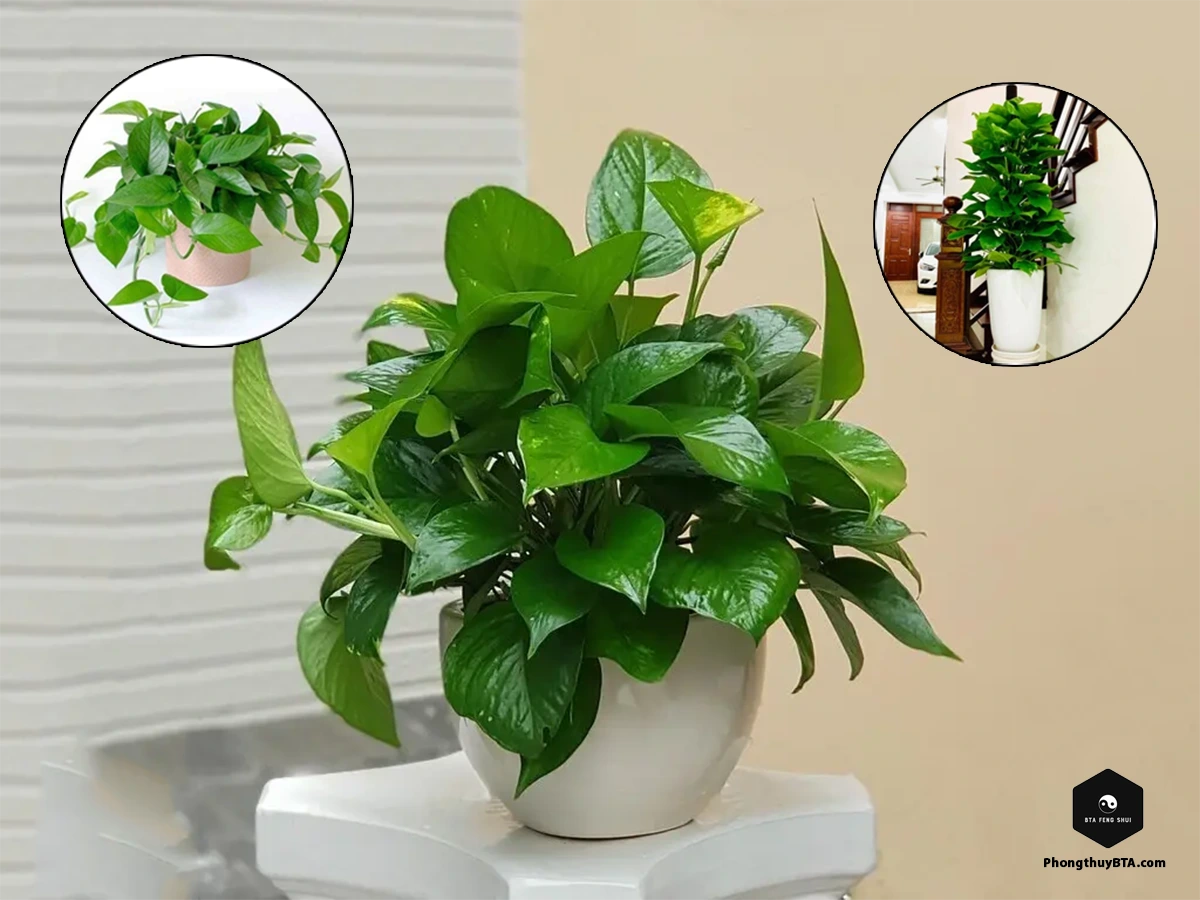
Pothos thrives in various environments, from bright, indirect light to low-light corners, making it ideal for beginners. Its resilience and aesthetic appeal have earned it the nickname devil’s ivy for its near-indestructible nature.
Exploring Pothos Varieties
The Pothos plant comes in stunning varieties, each with unique leaf patterns:
- Golden Pothos: Classic yellow-green variegated leaves, ideal for beginners.
- Marble Queen: White and green variegation, needs brighter light to maintain color.
- Neon Pothos: Vibrant lime-green leaves, perfect for low-light areas.
- Pearls and Jade: Gray, green, and white splotches, a compact climber.
- Silver Satin: Thick, silver-splashed leaves, drought-tolerant.
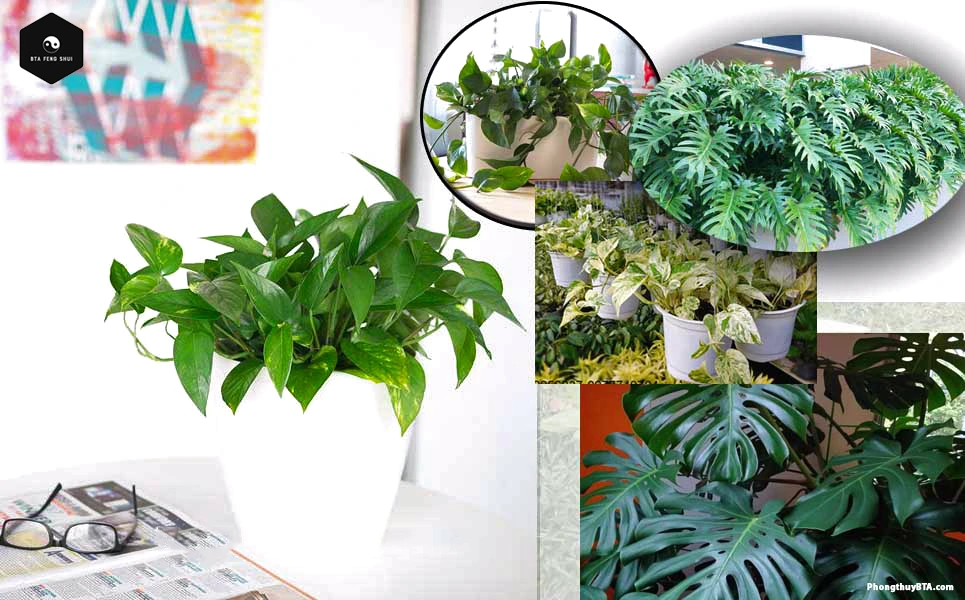
Each variety enhances different spaces, from vibrant Neon Pothos in dim corners to elegant Marble Queen in well-lit rooms.
Read more:
Feng Shui Significance of the Pothos plant
In feng shui, the Pothos plant is revered for its ability to attract prosperity, purify energy, and foster harmony. Its cascading vines symbolize growth and abundance, making it a powerful addition to any space.
- Wealth and Prosperity: The golden Pothos, with its vibrant yellow-green variegation, is associated with wealth and success. Placing it in the southeast corner (the wealth sector) of your home or office can enhance financial luck.
- Energy Purification: Pothos is believed to absorb negative energy, creating a calm and balanced environment. Its air-purifying qualities align with feng shui principles of promoting positive chi.
- Elemental Harmony: The Pothos plant aligns with the Wood element, making it ideal for those with Wood, Fire, or Water zodiac signs or elemental profiles. For Metal or Earth signs, pair it with red, purple, or brown pots to balance energies.
- Placement Tips: Position Pothos houseplants in living rooms, offices, or near entrances to invite positive energy. Avoid placing them in bedrooms, as their active energy may disrupt sleep.
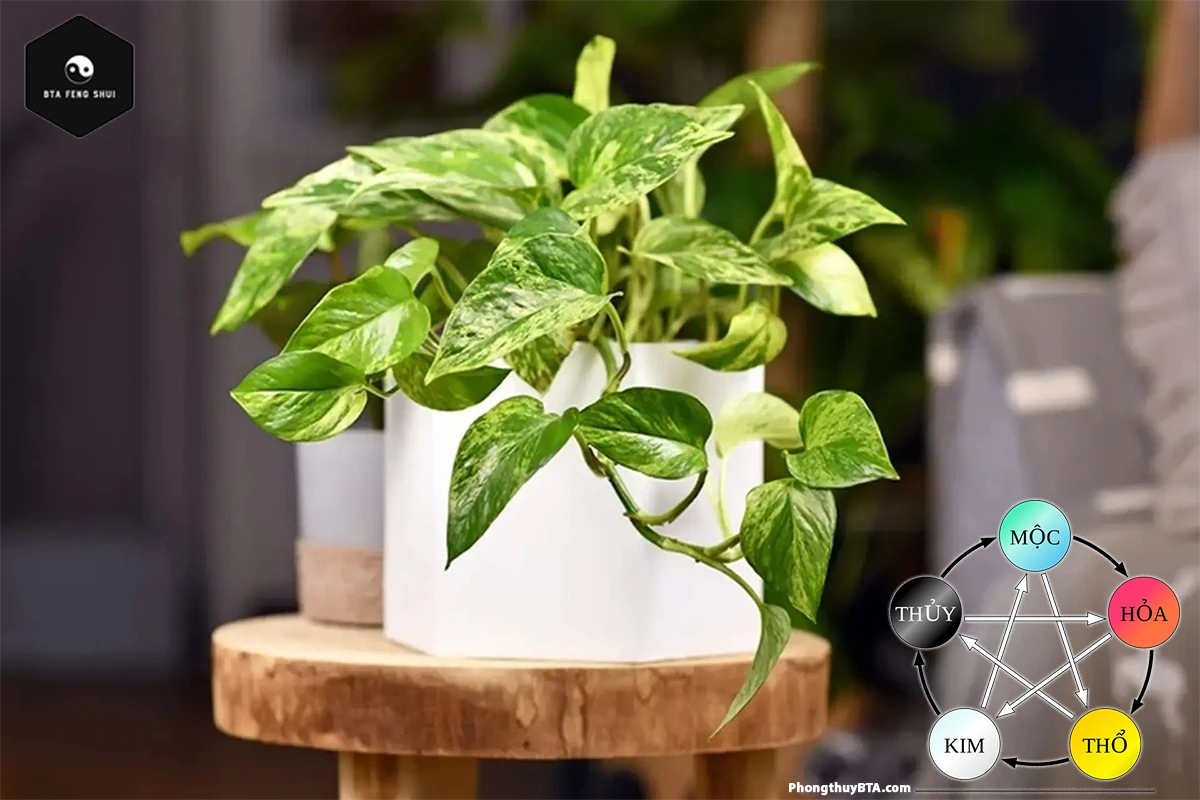
By incorporating Pothos into your space, you align with feng shui principles that promote vitality, wealth, and emotional well-being.
Mastering Pothos plant Care: A Comprehensive Guide
Caring for a Pothos plant is straightforward, but attention to detail ensures lush, vibrant growth. Below is a detailed guide to keep your golden Pothos thriving.
Propagating Pothos
Pothos propagation is simple and rewarding, typically done via stem cuttings:
- Select a healthy vine with 3–4 leaves and at least one node (the small bump where roots grow).
- Cut just below a node using clean, sharp scissors.
- Place the cutting in water, ensuring leaves don’t touch the water, or plant directly in moist potting soil.
- Roots form in 1–2 weeks. Transplant water-rooted cuttings to soil once roots are 2–3 inches long.
- Keep in bright, indirect light and maintain moist soil.
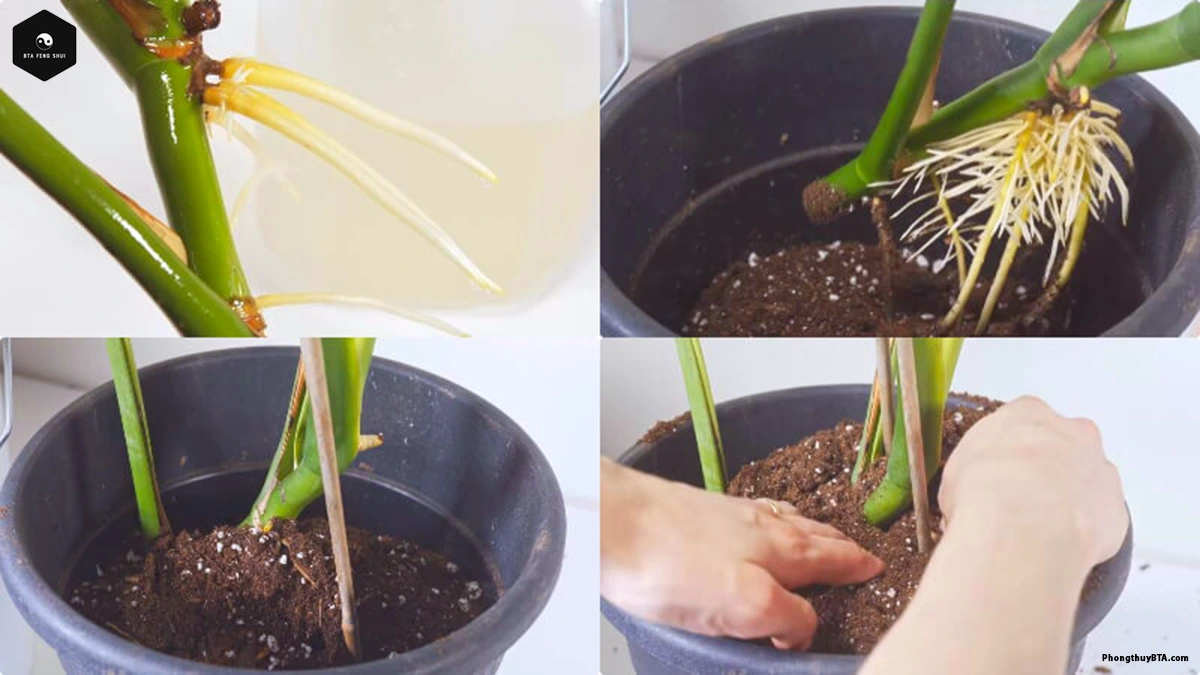
Soil Requirements
Use a well-draining potting mix, such as a blend of peat moss, perlite, and pine bark. A pH of 6.1–6.8 (neutral to slightly acidic) is ideal. For Pothos indoor plants, ensure the pot has drainage holes to prevent waterlogging.
Light Needs
Pothos plants thrive in bright, indirect light but tolerate low-light conditions, including fluorescent-lit spaces. Avoid direct sunlight, which can scorch leaves. Variegated varieties like Marble Queen need more light to maintain their patterns, while Neon Pothos can handle shadier spots.
Watering
Water when the top 2 inches of soil feel dry, typically every 1–2 weeks. Pothos care involves avoiding overwatering to prevent root rot. Drooping leaves signal it’s time to water, but don’t let leaves shrivel. In winter, reduce watering frequency.
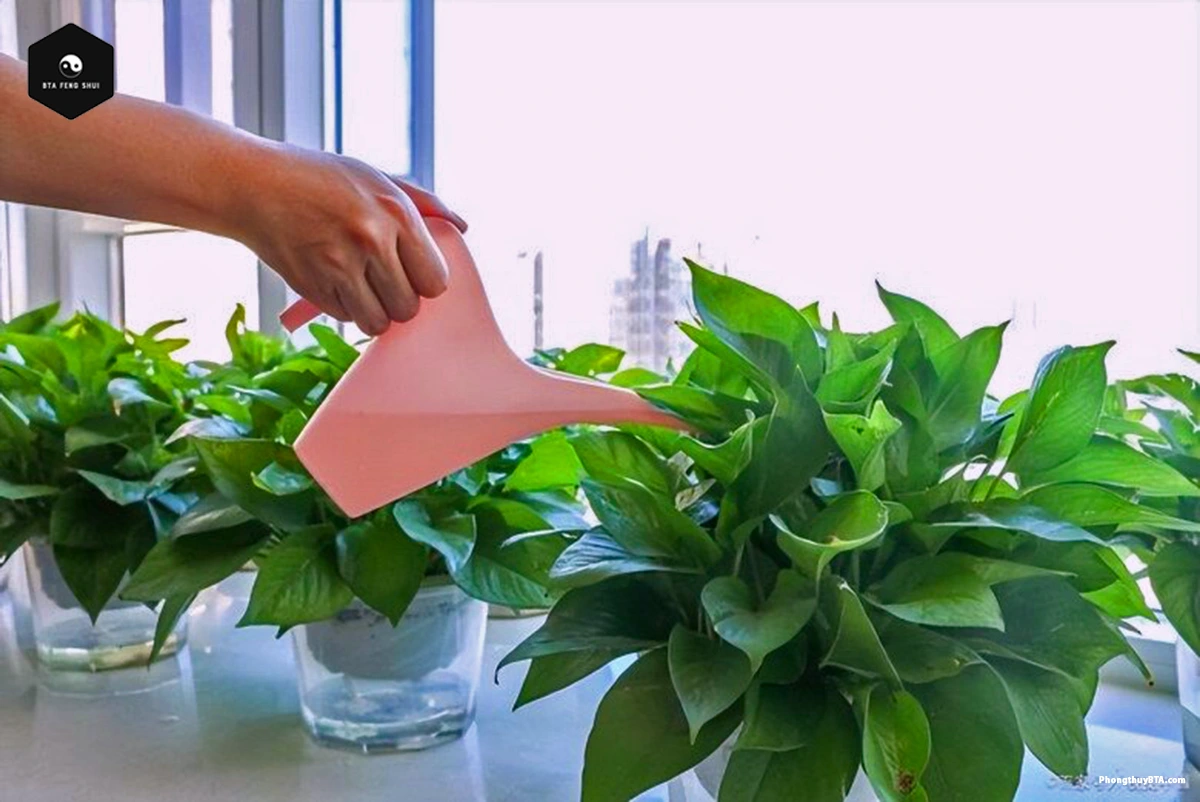
Temperature and Humidity
Maintain temperatures between 65–75°F, avoiding drops below 50°F. Pothos houseplants prefer high humidity but adapt to average household levels. Place in humid areas like bathrooms or use a pebble tray to boost moisture.
Fertilizing
Feed with a balanced (3-1-2) liquid fertilizer monthly during spring and summer. Avoid fertilizing in winter unless the plant is actively growing. Over-fertilizing can cause leaf burn, so follow product instructions.
Pruning
Trim long vines to encourage bushier growth or maintain desired length. Use sterile scissors to cut below a node, leaving at least two leaf nodes. Remove yellowing leaves to keep the plant healthy. Pruning is best done during the growing season.
Repotting
Repot every 1–2 years or when roots crowd the pot (visible through drainage holes or drooping despite watering). Choose a pot 1–2 sizes larger, use fresh soil, and water thoroughly. Pothos vines suit hanging baskets or terracotta pots for moisture control.
Common Pests and Diseases
Pothos is generally pest-resistant but may attract:
- Spider Mites: Look for stippling or webbing. Wipe leaves with a damp cloth or use neem oil.
- Mealybugs: White, cottony masses. Remove with alcohol-soaked cotton balls.
- Scale: Brown bumps on stems. Scrape off or apply insecticidal soap.
- Root Rot: Caused by overwatering. Trim affected roots and repot in fresh, dry soil.
Regular inspection and proper care prevent most issues.
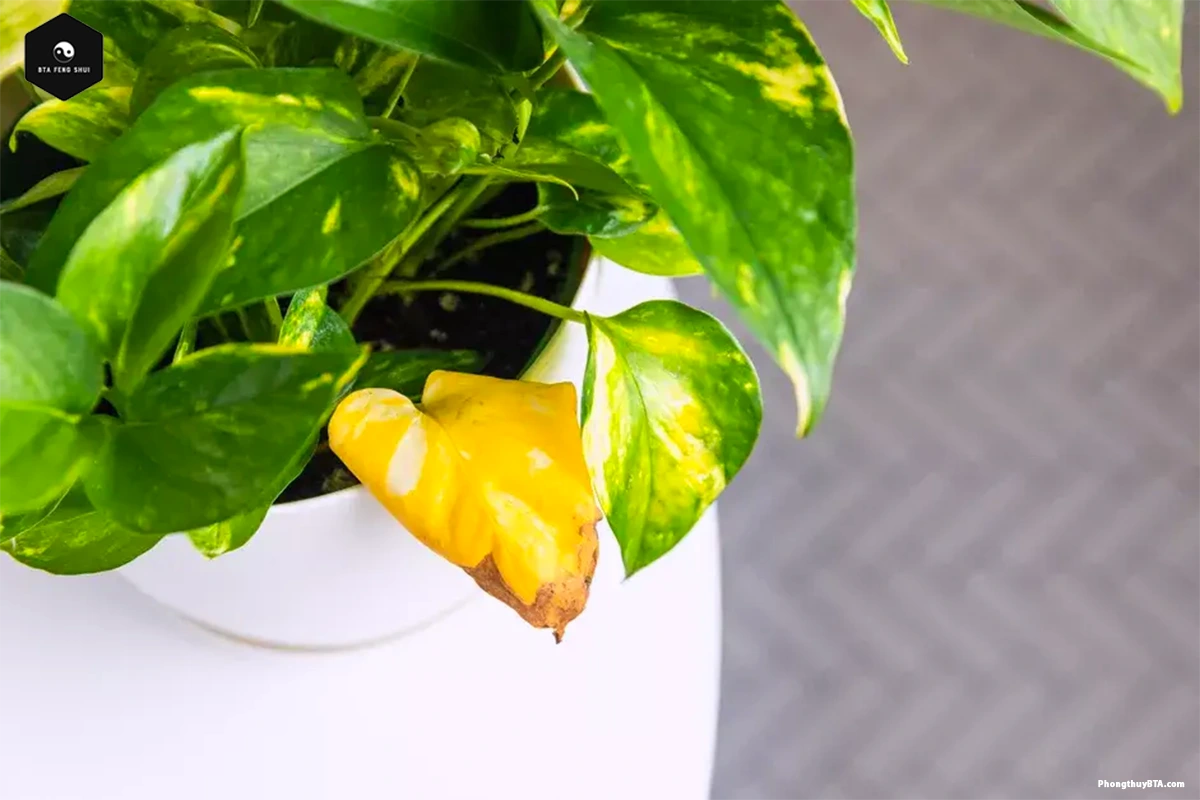
Read more:
- How to Grow and Care for Hydrangeas in Feng Shui Gardens
- Snake Plant Care: Feng Shui Powerhouse for Your Home
Additional Benefits of Pothos plants
Beyond feng shui, Pothos houseplants offer practical advantages:
- Air Purification: Pothos removes toxins like formaldehyde and benzene, improving indoor air quality.
- Stress Relief: Greenery promotes relaxation and mental well-being.
- Versatile Decor: Trailing vines suit shelves, hanging baskets, or trellises, adding elegance to any space.
- Low Maintenance: Perfect for busy lifestyles, requiring minimal care to thrive.
These benefits make Pothos a must-have for creating a healthier, more inviting home.
Frequently Asked Questions About Pothos plants
What is a Pothos plant?
A Pothos plant, or Epipremnum aureum, is a tropical vine with heart-shaped, often variegated leaves. Known as devil’s ivy, it’s prized for its resilience and low-maintenance care.
How to Care for a Pothos plant?
Provide bright, indirect light, water when the top soil is dry, and use well-draining soil. Maintain temperatures of 65–75°F and fertilize monthly during the growing season.
Why is Pothos Called Devil’s Ivy?
Its nickname devil’s ivy stems from its hardiness, thriving even in low light and neglectful conditions, making it nearly impossible to kill.
How Much Light Does Pothos Need?
Pothos prefers bright, indirect light but tolerates low light. Avoid direct sunlight to prevent leaf scorching.
Do Pothos Need Sun?
While Pothos doesn’t require direct sun, it thrives in bright, indirect light. Too much shade may dull variegation in varieties like golden Pothos.
How Long Do Pothos Live?
With proper care, Pothos plants live 5–10 years or longer, thanks to their resilient nature.
How to Encourage Pothos to Grow?
Prune regularly, provide bright light, and fertilize monthly during spring and summer to promote lush growth.
Are Pothos Tropical Plants?
Yes, Pothos originates from tropical regions like Southeast Asia, thriving in warm, humid conditions.
Enjoyed this guide? Please leave a 5-star review and share it with fellow plant lovers to spread the joy of Pothos care and Feng Shui harmony! Visit BTA Feng Shui for more plant care tips and Feng Shui insights.
























